Slack is a collaboration hub for work where all the information like Project discussions, important documents, Conversation, and announcements stored together which makes collaborating online as easy as collaborating in person.
Features,
- Effective communication
- Channels
- Direct messages
- Notifications
- Mentions
- Access to your tools and services
- Secure working environment
You can refer to the official link to know more about the features.
(How to) Install Slack
Slack for Linux is still in the Beta phase where features getting added and potential issues are removed. We are going to use Ubuntu for the demonstration. There are two methods to install slack. We are covering both the methods below, but you should use either.
1. Install Slack .deb package in Ubuntu
Open Firefox, Chrome, or any other preferred browser and click to download the .deb slack package from the Official page.
Here, you have the option to download.DEB(64-BIT) or.RPM(64-BIT). We are interested in.DEB package as we are installing on Ubuntu which is Debian based Linux Distro, for Redhat based distros like CentOS, you can go for the.RPM package.
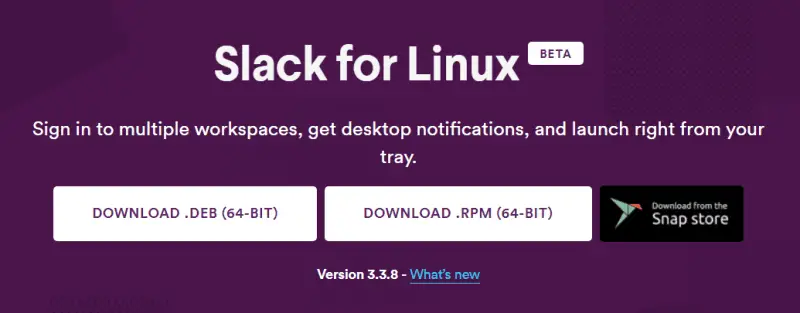
Click the Download.DEB (64-Bit) button. You should get below Window with Open with or Save File option.
Select Save File Option and Click Ok Button.
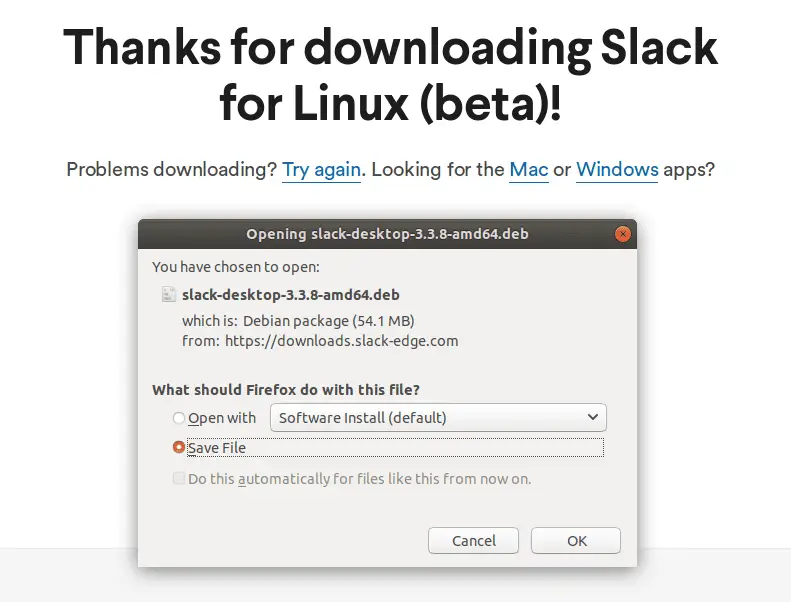
The installer gets downloaded in the Download folder. Select the installer file, right-click, and select Open with Software install option.
This starts the installation.
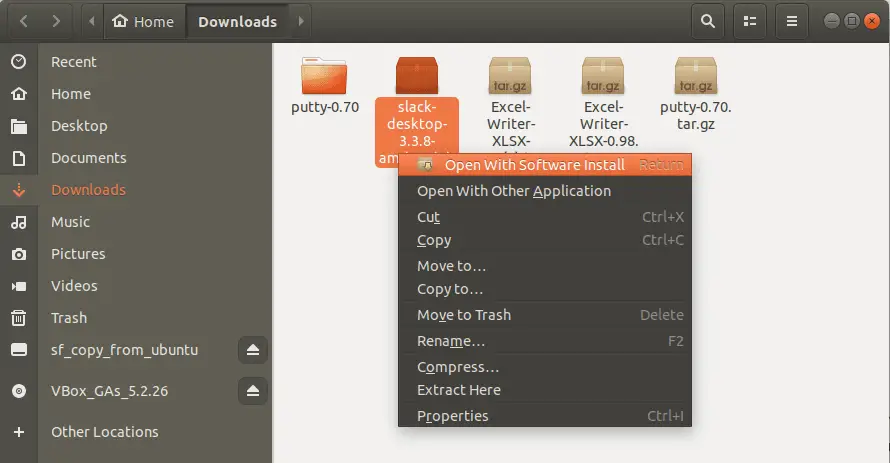
Installation requires Authentication. Enter the password and click the Authenticate button.
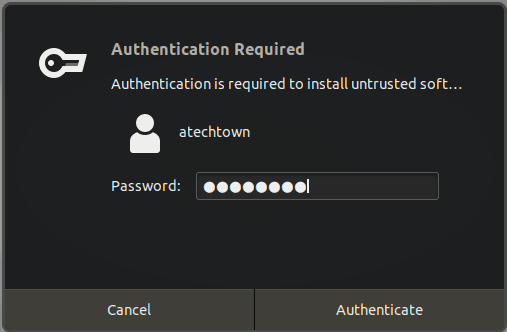
That’s it. It should get installed within seconds.
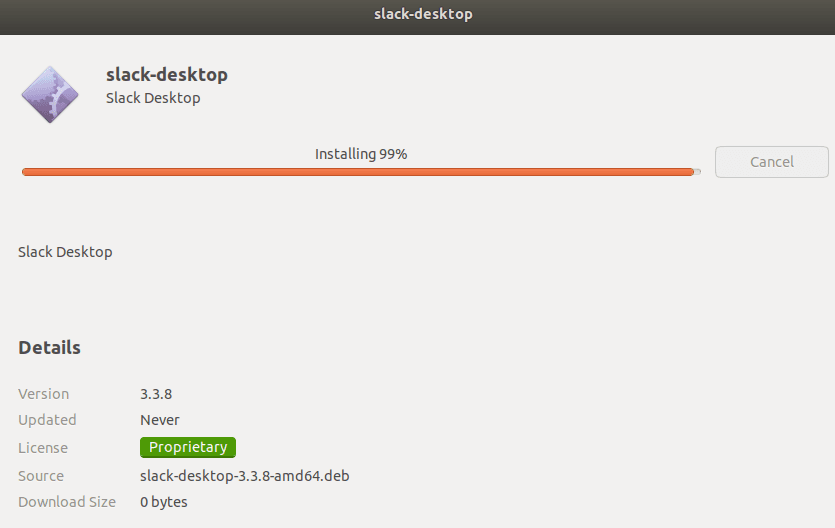
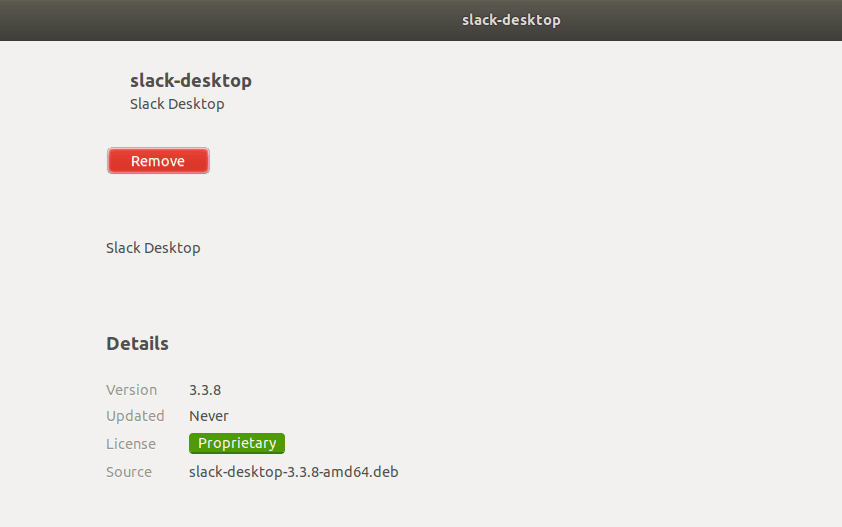
Just Navigate to Applications and Search for Slack. Click to launch it. Below is a welcome screen, just sign in and start collaborating with your team.

2. Install Slack Snap Package in Ubuntu
Slack is available as a Snap package. Snap is a single secure package and auto-update system for Ubuntu, Debian, Arch, Centos, Amazon Linux.
Login to Ubuntu and Press CTRL+ALT+ T to start the terminal and run the below command to install the slack snap package.
$ sudo snap install slack --classic slack 3.3.8 from Slack* installed
Verify installation and all other related information using the info command as shown below.
$ snap info slack name: slack summary: Team communication for the 21st century. publisher: Slack* contact: https://get.slack.help/hc/en-us license: unset description: | Caution: Slack for Linux is in beta. We’re still busy adding features and ironing out potential issues. Slack brings team communication and collaboration into one place so you can get more work done, whether you belong to a large enterprise or a small business. Check off your to-do list and move your projects forward by bringing the right people, conversations, tools, and information you need together. Slack is available on any device, so you can find and access your team and your work, whether you’re at your desk or on the go. Scientifically proven (or at least rumored) to make your working life simpler, more pleasant, and more productive. We hope you’ll give Slack a try. Stop by and learn more at: https://slack.com/ commands: - slack snap-id: JUJH91Ved74jd4ZgJCpzMBtYbPOzTlsD tracking: stable refresh-date: today at 12:16 IST channels: stable: 3.3.8 2019-03-12 (12) 151MB classic candidate: ^ beta: ^ edge: 3.3.1 2018-08-31 (8) 148MB classic installed: 3.3.8 (12) 151MB classic
That’s it and installation is complete.
Snap is auto-updated. But for any reason, if you find your slack snap outdated, use the below command to update if there is a newer version available.
$ sudo snap refresh slack snap "slack" has no updates available
You can remove slack snap using the command given below.
$ sudo snap remove slack slack removed
Summary
This comprehensive guide offers step-by-step instructions on how to install and get started with Slack, a popular team collaboration and communication tool, on Ubuntu.
By following the outlined steps, users can seamlessly integrate Slack into their workflow, enabling efficient communication, file sharing, and project management within their teams.
Thanks for Visiting the Blog. I hope you find the article useful.